316. Once again. Evidently the old year had ended with JANUARY 31 (396) and 4 days later the Full Moon had been at Adhil (the Train of the Garment of Andromeda). 400 - 80 = *320 (days after 0h) corresponded to *384 at the time of rongorongo, viz. to April 9. The following day was number 100 counted from January 1 and here the Sun reached 'the plumb line' connecting the Fox star with Spica.

... In the inscriptions of Dendera, published by Dümichen, the goddess Hathor is called 'lady of every joy'. For once, Dümichen adds: Literally ... 'the lady of every heart circuit'. This is not to say that the Egyptians had discovered the circulation of the blood. But the determinative sign for 'heart' often figures as the plumb bob at the end of a plumb line coming from a well-known astronomical or surveying device, the merkhet ...
... Proclus informs us that the fox star nibbles continuously at the thong of the yoke which holds together heaven and earth; German folklore adds that when the fox succeeds, the world will come to its end. This fox star is no other than Alcor, the small star g near zeta Ursae Majoris (in India Arundati, the common wife of the Seven Rishis, alpha-eta Ursae) ...

| JULY 26 |
27 |
28 |
29 (210) |
30 (*131) |
 |
 |
 |
 |
 |
| Ga5-17 |
Ga5-18 (128) |
Ga5-19 |
Ga5-20 |
Ga5-21 |
|
Al Áwwā'-11 (The Barker) / Shur-mahrū-shirū-18 (Front or West Shur)
Sombrero Galaxy = M104 Virginis (191.1), ρ Virginis (191.4), PORRIMA = γ Virginis, γ Centauri (191.5) |
ι Crucis (192.2), β Muscae (192.5), MIMOSA = β Crucis (192.9) |
no star listed (193) |
κ Crucis (194.4), ψ Virginis (194.5), μ Crucis, λ Crucis (194.6), ALIOTH (Fat Tail) = ε Ursae Majoris, ι Oct. (194.8) |
MINELAUVA = δ Virginis (195.1), COR CAROLI = α Canum Ven. (195.3) |
| Sept 28 |
29 (*192) |
30 (273) |
Oct 1 |
2 |
| °Sept 24 |
25 (*188) |
26 |
27 (270) |
28 |
| 'Sept 1 |
2 (*165) |
3 |
4 |
5 (248) |
| "Aug 18 (*150) |
19 (231) |
20 |
Hora Iti 21 |
22 |
| CLOSE TO THE FULL MOON: |
| JAN 25 |
26 |
27 (392) |
28 |
29 (*314) |
| OROMANGA |
PAPA O PEA |
|
... He (i.e., Ira) said, 'Let's go! We shall go to Papa O Pea'. They all got up and moved on. On the twentieth day of the month of August ('Hora Iti') they went to Papa O Pea. They all went and came to Papa O Pea, looked around in Papa O Pea, and gave the name 'Papa O Pea A Hau Maka'. They stayed five days in Papa O Pea ...
Pea. (Also peapea): To go away with bits of food or mud sticking to one's face or garments. Vanaga. Peaha, perhaps ... maybe, chance, doubtful; reoreo peaha ... Ma.: pea, perhaps. Peapea, an erasure ... hakapeapea ... Peau, to sweep all away. Ma.: peau, to be turned away. Churchill. Peau, a wave (Sa., To., Fu., Fotuna, Niuē, Mq., Nuguria); Mgv.: peau, peahu, id. Churchill 2.
... But in the fullness of time an obscure instinct led the eldest of them towards the anthill which had been occupied by the Nummo. He wore on his head a head-dress and to protect him from the sun, the wooden bowl he used for his food. He put his two feet into the opening of the anthill, that is of the earth's womb, and sank in slowly as if for a parturition a tergo. The whole of him thus entered into the earth, and his head itself disappeared. But he left on the ground, as evidence of his passage into that world, the bowl which had caught on the edges of the opening. All that remained on the anthill was the round wooden bowl, still bearing traces of the food and the finger-prints of its vanished owner, symbol of his body and of his human nature, as, in the animal world, is the skin which a reptile has shed ... 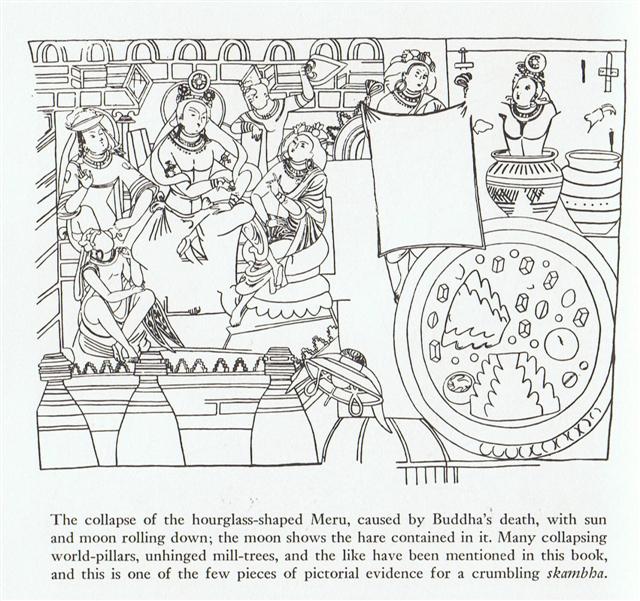
|
| ξ Phoenicis (9.0), ρ Tucanae (9.1), DENEB KAITOS (Tail of the Sea Beast) = β Ceti, η Phoenicis (9.4), AL NITHĀM (String of Pearls) = φ¹ Ceti (9.6) |
ACHIRD (Woman with Luminous Rays) = η Cassiopeiae (10.7) |
Legs-15 (Wolf)
ν Andromedae (11.0), φ² Ceti (11.1), ρ Phoenicis (11.2), η Andromedae (11.4) |
CIH (Whip) = γ Cassiopeiae, λ Tucanae (12.4), φ³ Ceti (12.6), μ Andromedae (12.8)
*12.4 + *365 -*41.4 = *336 (= 4 * 84) |
φ4 Ceti (13.2) |
| March 30 |
31 (*375) |
April 1 (91) |
2 |
3 |
| °March 26 |
27 |
28 (*372) |
29 (88) |
30 |
| 'March 3 |
4 |
5 (64) |
6 (*350) |
7 |
| "Febr 17 |
18 |
19 (50) |
20 (*336) |
Tehetu'upú 21 |
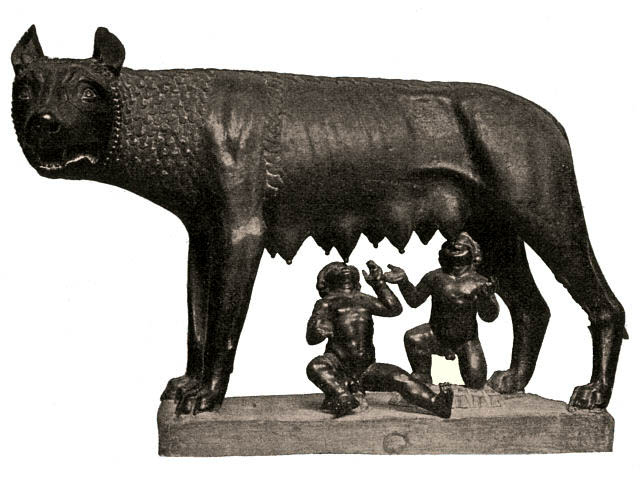 |
| JULY 31 |
AUG 1 |
2 (214) |
3 (*500) |
4 (*136) |
5 |
6 |
 |
 |
 |
 |
 |
 |
 |
| Ga5-22 |
Ga5-23 |
Ga5-24 |
Ga5-25 (135) |
Ga5-26 |
Ga5-27 (→ 364) |
Ga5-28 |
| δ Muscae (196.5) , VINDEMIATRIX (Grape Gatherer) = ε Virginis (196.8) |
13h (197.8)
ξ¹ Centauri (197.1), ξ² Centauri (197.9) |
APAMI-ATSA (Child of Waters) = θ Virginis, ψ Hydrae (198.5), DIADEM = α Com. Ber. (198.9) |
AL DAFĪRAH (Tuft) = β Com. Ber. (199.4) |
σ Virginis (200.4) |
γ Hydrae (201.0), ι Centauri (201.4) |
Al Simāk-12 (Lofty) / Chitra-14 (Bright One) / Horn-1 (Crocodile) / Sa-Sha-Shirū-20 (Virgin's Girdle) / ANA-ROTO-3 (Middle pillar)
MIZAR = ζ Ursae Majoris (202.4), SPICA = α Virginis, ALCOR = 80 Ursae Majoris (202.7)
SADALMELIK (α Aquarii)
*161 = *202.4 - 41.4 |
| Oct 3 |
4 |
5 |
6 |
7 (*200) |
8 |
9 (282) |
| °Sept 30 |
°Oct 1 |
2 |
3 (275) |
4 (*196) |
5 |
6 |
| 'Sept 6 |
7 (250) |
8 |
9 |
10 |
11 |
12 (*175) |
| "Aug 23 |
24 (236) |
25 |
Hora Iti 26 |
27 |
28 |
Hora Iti 29 |
|
Ahu. 1. Funerary monument with niches holding the skeletons of the dead. 2. Generic term for a grave, a tomb merely enclosed with stones. 3. Stone platform, with or without graves. 4. Elevated seat, throne. 5. Swollen; to swell up: ku-ahu-á tooku va'e, my foot is swollen; ananake te raá e-tagi-era te ûka riva mo toona matu'a ka-ahu ahu-ró te mata, every day the daughter cried for her parents until her eyes were quite swollen. Vanaga.
1. To transfer, to transplant, to take up by the roots. 2. To puff up, to swell, a swelling, protuberance; gutu ahu, swollen lips; ahuahu, to swell, plump, elephantiasis, dropsy; ahuahu pupuhi, amplitude; manava ahuahu, indigestion. 3. Paralysis. 4. A carved god of dancing, brought forth only on rare occasions and held of great potency. Ahuahu, inflammation. Ahukarukaru (ahu 2 - karukaru), dropsy. Churchill. |
Ahu Akapu
(2 days) |
Aka. 1. Anchor: he-hoa te aka, to drop anchor. 2. Root of certain plants (banana tree, taro, sugar-cane). 3. To be paralyzed by surprise. Vanaga.
1. Root; aka totoro, to take root. P Pau., Mq.: aka, root. Ta.: aa, id. 2. (āka) anchor. 3. Causative (haka). Churchill. |
Pu Pakakina
(1 month) |
| CLOSE TO THE FULL MOON: |
| JAN 30 |
31 (396) |
FEBR 1 |
2 |
3 |
4 (*320) |
5 (36) |
| PAPA O PEA |
... On the twenty-sixth day of the month of August ('Hora Iti') they went from Papa O Pea to Ahu Akapu. They all went and reached Ahu Akapu. They looked around and gave the name 'Ahu Akapu A Hau Maka'. They also saw (all of) Te Pito O Te Kainga, looked around, and gave (the whole island) the name 'Te Pito O Te Kainga A Hau Maka'. [E:31] They made camp and rested at Ahu Akapu for two days. On the twenty-ninth day of the month of August ('Hora Iti') they went to Pu Pakakina. They arrived, remained there, and gave the name 'Pu Pakakina A Ira'. They remained one month in Pu Pakakina. |
| no star listed (14) |
1h (15.2)
β Phoenicis (15.1), υ Phoenicis, ι Tu canae (15.6), η Ceti, ζ Phoenicis (15.7) |
Al Batn Al Hūt-26 (Belly of the Fish) / Revati-28 (Prosperous) / 1-iku (Field Measure)
MIRACH (Girdle) = β Andromedae, KEUN MAN MUN (Camp's South Gate) = φ Andromedae (16.0), ANUNITUM = τ Piscium (16.5), REVATI (Abundant) = ζ Piscium (16.9)
REGULUS (α Leonis)
|
ν Phoenicis (17.4), κ Tucanae (17.6) |
no star listed (18) |
ADHIL (Garment's Train) = ξ Andromedae (19.3), θ Ceti (19.7) |
KSORA (Knee) = δ Cassiopeiae (20.1), ω Andromedae (20.6), γ Phoenicis (20.8) |
| April 4 |
5 (460 = 396 + 64) |
6 |
7 |
8 (13 * 29½ - ½) |
9 (*384) |
10 (100) |
| °March 31 |
°April 1 (91) |
2 (*377) |
3 |
4 |
5 (460 = 396 + 64) |
6 (*16) |
| 'March 8 |
9 |
10 (*354) |
11 |
12 |
13 (72) |
3-14 |
| Tehetu'upú 22 |
TERMINALIA |
"Febr 24 (420) |
25 |
26 |
27 (*7 * 7 * 7) |
28 (59) |
|
... The leap day was introduced as part of the Julian reform. The day following the Terminalia (February 23) was doubled, forming the bis sextum - literally 'double sixth', since February 24 was 'the sixth day before the Kalends of March' using Roman inclusive counting (March 1 was the 'first day'). Although exceptions exist, the first day of the bis sextum (February 24) was usually regarded as the intercalated or 'bissextile' day since the third century. February 29 came to be regarded as the leap day when the Roman system of numbering days was replaced by sequential numbering in the late Middle Ages ... |
The Chinese had a list of 28 stations which was beginning with Spica and here the Explorers went to Pu Pakakina A Ira.
| 1 |
Horn |
α Virginis (Spica) |
Crocodile |
(202.7) |
Oct 9 (282) |
| 2 |
Neck |
κ Virginis |
Dragon |
(214.8) |
Oct 21 (294) |
| 3 |
Root |
α Librae (Zuben Elgenubi) |
Badger |
(224.2) |
Oct 31 (304) |
| 4 |
Room |
π Scorpii (Vrischika) |
Hare |
(241.3) |
Nov 17 (321) |
| 5 |
Heart |
σ Scorpii |
Fox |
(247.0) |
Nov 23 (327) |
| 6 |
Tail |
μ Scorpii (Denebakrab) |
Tiger |
(254.7) |
Nov 30 (334) |
| 7 |
Winnowing Basket |
γ Sagittarii (Nash) |
Leopard |
(273.7) |
Dec 19 (353) |
| December solstice |

| 0. HANGA TE PAU KO TE TOMONGA O IRA |
| 1. PU MAHORE |
Poko Uri |
Te Manavai |
Te Kioe Uri |
Te Piringa Aniva |
Te Pei |
Te Pou |
8. HUA REVA |
| Akahanga |
10. Hatinga Te Kohe |
Roto Ire Are |
Tama |
One Tea |
14. HANGA TAKAURE |
Poike |
16. PUA KATIKI |
| Maunga Teatea |
Mahatua |
Taharoa |
20. HANGA HOONU |
| RANGI MEAMEA |
Peke Tau O Hiti |
OROMANGA |
Maunga Hau Epa |
HANGA MORIA ONE |
| Papa O Pea |
Ahu Akapu |
28. TE PITO O TE KAINGA |
And 12 days after the Crocodile (Spica) came κ Virginis (the Dragon) which at the time of rongorongo rose with the Sun *214 (= 2 * 107) days after 0h, corresponding to day day *214 - *64 = *150 at the time of the Bull (when Hyadum II had been at 0h).
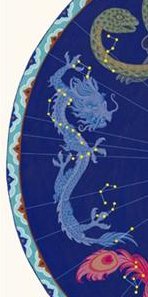
We can recognize Corvus at the tail of the Red Bird of summer and then the Blue Dragon was rising.
... The Raven constellation had no central ruler, and in principle there were only 4 corners without any central 'tent pole'. Although with a closer look 7 stars can be found, as depicted by the Chinese ...
... Ravens, unlike geese, loons and many other birds, do not in fact have penises - a fact recorded and accounted for in several ways in Northwest Coast mythology ... Live holothurians, when handled, have the disconcerting habit of transforming themselves suddenly from soft to hard or limp to stiff and back again. If handled enough, they will also ejaculate, disgorging their own viscera in apparent self-defence. This behavior is efficiently explained in a story Arthur Lewis told in Tsimshian to Gwüsk'aayn in the 1930s. The first holothurian, Lewis says, was the cast-off penis of the Raven ...

... Sea cucumbers have also inspired thousands of haiku in Japan, where they are called namako (ナマコ), written with characters that can be translated 'sea mice'. In English translations of these haiku, they are usually called 'sea slugs'; according to the Oxford English Dictionary, the term 'sea slug' originally referred to holothurians (in the 18th century), though biologists now use the name only for the nudibranch molluscs, marine relatives of land slugs. Almost 1,000 Japanese holothurian haiku translated into English appear in the book Rise, Ye Sea Slugs! by Robin D. Gill ...
| Manacle |
ziqq |
Phoenician zayin |
 |
Greek zeta |
Ζ (ζ) |
|
... Zeta (uppercase Ζ, lowercase ζ; Greek: ζήτα ... is the sixth letter of the Greek alphabet. In the system of Greek numerals, it has a value of 7. It was derived from the Phoenician letter Zayin. Letters that arose from zeta include the Roman Z and Cyrillic З ...
Zayin (also spelled Zain or Zayn or simply Zay) is the seventh letter of many Semitic abjads ... It represents the sound [z]. The Phoenician letter appears to be named after a sword or other weapon. (In Biblical Hebrew, 'Zayin' means sword, and the verb 'Lezayen' means to arm. In modern Hebrew, 'zayin' means penis and 'lezayen' is a vulgar term which generally means to perform sexual intercourse and is used in a similar fashion to the English word fuck, although the older meaning survives in 'maavak mezuyan' (armed struggle) and 'beton mezuyan' (armed, i.e., reinforced concrete). The Proto-Sinaitic glyph according to Brian Colless may have been called ziqq, based on a hieroglyph depicting a 'manacle'.


|
Once Ira had satisfied himself with his arrangement it was time to let Makoi take over:
... Ira rode the waves toward the right side. He looked diagonally toward the land, looked in the direction of Ruhi Hepii, and the ornament of Ruhu Hepii shone brightly. He went back out into the sea, and the movement of the wave was to the left side. Again he glanced, this time in the direction of Pu, and the ornament of Pu shone brightly. Again he went out into the sea. From the middle, the two necklaces around the neck of the two figurines shone (toward him). His ride on the wave ended in Rio, and therefore the name Hanga O Rio was given. Ira remained on shore, pondered, and said, This is well done! Ruhi to the right, Pu to the left, and Hinariru Nui and Hinariru Iti in the middle.
[E:37] They all got up, climbed up, and entered into the cave. Ira said the following to Makoi: You are the one who shall stay here. We, on the other hand, have to turn around. Makoi replied, All right with me! Then Ira continued to speak to Makoi: Tomorrow, when it grows light, set out and name the places beginning with Apina. Makoi replied, How shall I give the names? Again Ira spoke, In Hiva are the names that are to be taken to name (the places of the new land).
It grew light and Makoi got up. He set out and came to Apina. When he arrived there, he gave the name This is Apina Iti, this is Rapa Kura. He went on and came to Hanga O Ua. He gave the name This is Hanga O Ua of the Beautiful Wave (vave renga). Makoi went on, giving names, until he had made a (complete) circle around both sides (of the island). In Apina Nui a stone (maea) was erected, saying that the naming was done on a (round) trip during a single day ...
Barthel has changed the name ko hanga o uo to ko hanga o ua, an example of manipulations which threaten to obliterate original meanings. I guess the intention of the creators of the Manuscript, when they wrote ou instead of ua, was to render a special meaning, a hint in the background so to say.
| Hua. 1. Testicle. 2. Figuratively: son, hua tahi, only son; fruits of the earth; to grow well (of fruits). 3. To cause a fight, a quarrel. Hua-ai, generation, as lineage of direct descendents;
contemporaries. Huahua, coccyx of bird, 'parson's nose': huahua moa, huahua uha. Huataru, a creeper (Chenopodium ambiguum). Vanaga. 1. The same; ki hua, again, to continue, to strain, to struggle, to move, to repeat, over and above. Mq.: hua, the same, to return, to recommence. 2. To bloom, to sprout; flower, fruit (huaa); huaa tae oko, huaa vahio, young fruit; hua atahi, only son; huahaga, fruit; mei te huahaga o tokoe kopu, the fruit of thy body; tikea huahaga, deceptive appearance. P Pau.: ua, to be born; huahaga, lineage. Mgv.: hua, to produce (said of trees, grain, etc.), blooming time of flowers, abundance of fruit. Mq.: hua, to produce, to bear fruit. Ta.: ua, to sprout. Huahua. 1. Tailless fowl. 2. Vein, tendon, line. 3. Mgv.: huahua, pimples covering the face. Ta.: huahua, id. Mq.: hua, tubercules. Sa.: fuafua, abscess on hand or feet. Ma.: huahua, small pimples. Pau.: Hua-gakau, rupture. Ta.: áau, entrails. Sa.: ga'au, id. Ma.: ngakau, id. Churchill. 1. Fruit. 2. Egg. 3. Tā hua = 'genealogical writing' or 'same writing'. Fischer. |
| Vave. Water in motion, a long wave; pokopoko vave, trough of the sea; tai vave, rough sea; vave kai kohe, unapproachable. Churchill. Pau.: A fringing reef. Mgv.: taivave, a rolling billow. Ta.: vavea, a towering billow. Churchill. |
| Rega. Ancient word, apparently meaning 'pretty, beautiful'. It seems to have been used also to mean 'girl' judging from the nicknames given young women: rega hopu-hopu. girl fond of bathing; rega maruaki, hungry girl; rega úraúra, crimson-faced girl. Vanaga. Pau.: rega, ginger. Mgv.: rega, turmeric. Ta.: rea, id. Mq.: ena, id. Sa.: lega, id. Ma.: renga, pollen of bulrushes. Churchill. |
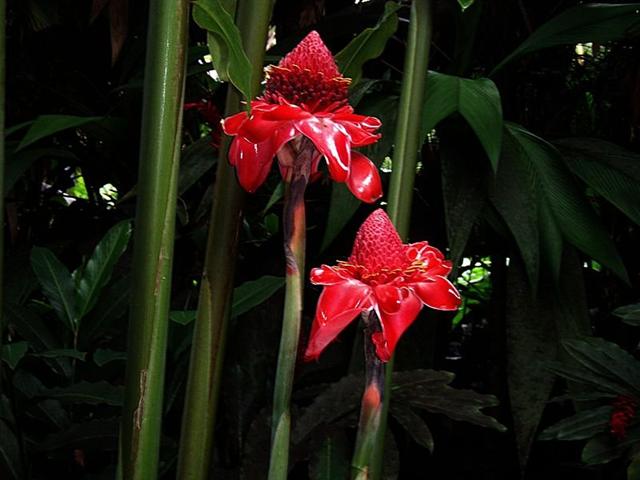
This place was not Hanga-o-ao, which we can find on the map between Poike and Anakena:
.jpg)
| Ao. Large dance paddle. 1. Command, power, mandate, reign: tagata ao, person in power, in command, ruler. 2. Dusk, nightfall. 3. Ao nui, midnight. 4. Ao popohaga, the hours between midnight and dawn. Aô, to serve (food); ku-âo-á te kai i ruga i te kokohu, the food is served on a platter. Vanaga. 1. Authority, kingdom, dignity, government, reign (aho); topa kia ia te ao, reign; hakatopa ki te ao, to confer rank; ao ariki, royalty; ka tu tokoe aho, thy kingdom come. PS Mgv.: ao, government, reign. Mq.: ao, government, reign, command. Sa.: ao, a title of chiefly dignity; aoao, excellent, surpassing, supreme. 2. Spoon; ao oone, shovel. 3. Dancing club T. 3. Aonui (ao-nui 2), midnight. 4. Pau.: ao, the world. Mgv.: ao, id. Ta.: ao, id. Mq.: aomaama, id. Ma.: ao, id. 5. Pau.: ao, happy, prosperity. Mgv.: ao, tranquil conscience. Ta.: ao, happiness. 6. Mgv.: ao, cloud, mist. Ta.: ao, id. Mq.: ao, id. Sa.: ao, cloud. Ma.: ao, id. 7. Mgv.: ao, hibiscus. 8. Ta.: ao, day. Mq.: ao, day from dawn to dark. Sa.: ao, id. Ma.: ao, id. 9. Ta.: ao, a bird. Ha.: ao, id. 10. Mq.: ao, respiration, breath. Ha.: aho, breath. 11. Mq.: ao, to collect with hand or net. Sa.: ao, to gather. Ma.: ao, to collect. Ta.: aoaia, to collect food and other things with care. Churchill. |
| Ua. 1. Cause, reason why something happens or is done; he ûa te ua, au i-ta'e-iri-ai ki tooku hare, because of the rain, I did not go home; ua kore, without cause, without reason. 2. Ceremononial stave with a human face carved at one extremity. Vanaga. Cfr toko. 1. A long club T. 2. Mgv.: ua, the genitalia. Ta.: hua, id. Mq.: hua, id. Ha.: hua, testicles. 3. Ta.: ua, the back of the neck. Ma.: ua, id. Sa.: ua, the neck. 4. Ta.: ua, a land crab which shears iron. Ma.: uka, lobster. Sa.: uga, the hermit crab. Churchill. Ûa. Rain; 1. ûa hakamito, persistent, but not strong, rain; 2. ûa kura, fine rain, drizzle; 3. ûa matavaravara, strong rain; 4. ûa parera, torrential rain; 5. ûa tai, rain followed by fair weather at sea. Ehu ûa, drizzle. Vanaga. Ûaûa. Tendons, muscles. 1. Hau ûaûa kio'e, line made from rats' tendons. 2. Ûaûa toto, vein, artery. 3. Ûaûa piki, spasm. Vanaga. 1. Rain; hoa mai te ua, to rain; mou te ua, to cease raining. P Mgv., Mq., Ta.: ua, rain. 2. Vein, artery, tendon (huahua 1) (uha G); ua nene, pulse; ua nohototo, artery, ua gaei, pulse. Uaua, vein, tendon, line; kiko uaua, muscle T. Hakauaua, to mark with lines. P Pau.: tare-ua, tendon. Mgv., Mq., Ta.: uaua, vein, tendon. Churchill. U'a. Of the tide, to reach its maximum; tai u'a, high tide. Vanaga. Wave, surge; tai ua, high tide. Churchill. Uá. Ata uá, morning twilight. Uáuá, to reside; resident; noho uáuá to settle somewhere; ina koe ekó noho uáuá, do not establish yourself there. Vanaga. |
 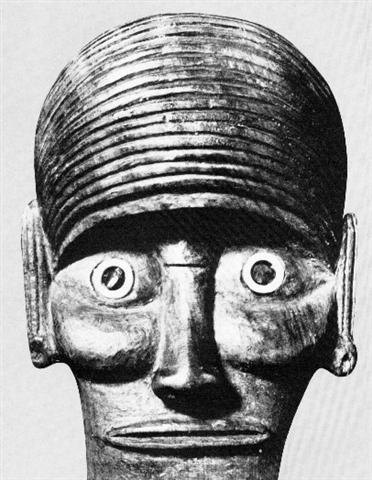
... The Sacred Book of the ancient Maya Quiche, the famous Popol Vuh (the Book of Counsel) tells of Zipacna, son of Vucub-Caquix (= Seven Arata). He sees 400 youths dragging a huge log that they want as a ridgepole for their house. Zipacna alone carries the tree without effort to the spot where a hole has been dug for the post to support the ridgepole. The youths, jealous and afraid, try to kill Zipacna by crushing him in the hole, but he escapes and brings down the house on their heads. They are removed to the sky, in a 'group', and the Pleiades are called after them ...
 |
 |
 |
 |
| Pop (20) |
Uo |
Zip |
Zotz (80) |
... How shall I give the names? Again Ira spoke, 'In Hiva are the names that are to be taken to name (the places of the new land)' ...
| Hiva. Name of the country from where, according to tradition, came the Polynesian immigration of Hotu Matu'a; nowadays, this name designates any continent or foreign country: tagata Hiva, foreigner, person from the mainland. Vanaga. Strange, alien, foreign; a stranger; kuhane hiva, Holy Ghost; hakahiva: mata hakahiva, to look back (? hakahira). Mq., Mgv.: hiva, iva, a stranger, a person from another district or country. Pau.: pure-hiva, a butterfly. Churchill. H.: 1. Entirely black, as of pigs offered to the gods, a desirable blackness contrasting with uli and 'ele'ele, which have pejorative connotations. 2. Choice. 3. A term qualifying coconuts and kava. Polo hiwa, dark, glistening black, as clouds or tapa. Ua hala i ke ao polohiwa a Kāne, passed to the dark clouds of Kāne (death). Hiwa hiwa, precious, beloved, esteemed, petted, darling, indulged; favorite. Ka Mesia, ka hiwahiwa a ke Akua, the Messiah, the chosen of God. Ho'o hiwa hiwa to honor, adorn, decorate; to display, as the flag; to treat as a favorite; festive. He mea ho'ohiwahiwa i ke akua, a thing to honor the gods. 'O ka mea ho'ohiwahiwa i kāna kauā mai kona wā 'u'uku mai, he who delicately brings up his servant from his childhood. Wehewehe. |
By repeatedly copying and carrying forward the old names and structures - and securing their meanings by numerous eye-catching crossconnections - there eventually would have been established a global consensus. For instance can we recognize the rising Blue Dragon in the first Mayan day sign Imix:
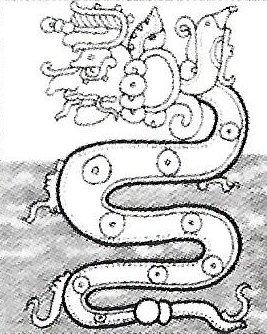
... The life-force of the earth is water. God moulded the earth with water. Blood too he made out of water. Even in a stone there is this force, for there is moisture in everything. But if Nummo is water, it also produces copper. When the sky is overcast, the sun's rays may be seen materializing on the misty horizon. These rays, excreted by the spirits, are of copper and are light. They are water too, because they uphold the earth's moisture as it rises. The Pair excrete light, because they are also light ... 'The sun's rays,' he went on, 'are fire and the Nummo's excrement. It is the rays which give the sun its strength. It is the Nummo who gives life to this star, for the sun is in some sort a star.' It was difficult to get him to explain what he meant by this obscure statement. The Nazarene made more than one fruitless effort to understand this part of the cosmogony; he could not discover any chink or crack through which to apprehend its meaning. He was moreover confronted with identifications which no European, that is, no average rational European, could admit. He felt himself humiliated, though not disagreeably so, at finding that his informant regarded fire and water as complementary, and not as opposites. The rays of light and heat draw the water up, and also cause it to descend again in the form of rain. That is all to the good. The movement created by this coming and going is a good thing. By means of the rays the Nummo draws out, and gives back the life-force. This movement indeed makes life ... The second day sign was Ik (air, life) and this was the next stage, when the lower hemisphere (of fishes) gave way for the upper hemisphere (of birds).

Easter Island was far down and Hawaii far up. Gravitation moved everything downwards, but there had to be a return force in order to keep the cycle going. The first day sign of the Mayas was Imix (the water dragon) and its undulating movements illustrated how there was another force than gravitation, viz. the force of growth ...

This could have been the reason for the rongorongo glyph lines ascending in an undulating fashion instead of descending.
|
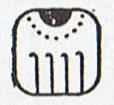
|
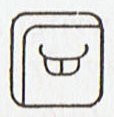
|
|
Imix |
Ik |
| Water |
Air |
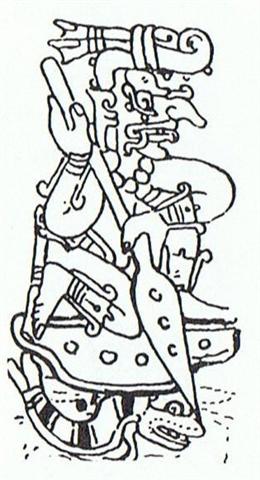 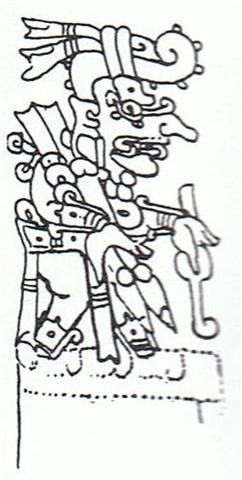
|














.jpg)












